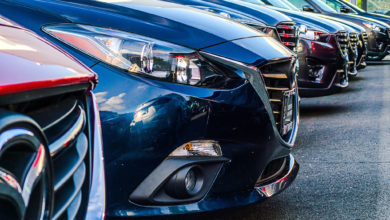How Much Car Can I Afford?

Adding a car to your household budget can be an uncertain task. Some experts say that all of your automotive expenses like gas, insurance and car payments should not exceed 20% of your gross monthly income. Others put the max at about half of your annual take home. The more frugal experts say you shouldn’t spend any more than 10% – 15% of your annual income on a vehicle.
There’s no perfect formula you can use to determine how much you can afford. The short answer is that your car payment should not be more than 15% of your monthly take home pay. If you’re leasing a new vehicle or buying a used one, it should be no more than 10%. The reasoning is that the payment won’t be the total amount you will be spending. You’ll need to add in the costs of fuel and insurance. Those costs can add up to another 7% of your take-home pay.
The 10% – 15% rule may not work for everyone, but it’s a good starting point. Here’s how you can get an approximated number for your situation.
- Calculate Your Budget
Total up what you spend each month. Take your monthly take home pay and deduct rent/mortgage, groceries, bills, childcare expenses, savings you put aside and entertainment costs. This will give you an idea how much car you can afford to spend on a car. - Determine Fuel and Insurance Costs
Before you buy or lease, figure out what fuel expenses will be and what the cost will be to insure the vehicle. These costs can and will vary considerably based on where you live. Driving history and the make/model of vehicle you’ve chosen will also be factors.
Check the governments Fueleconomy.gov website for a detailed list of fuel cost figures.
An Average Car Buyer Scenario
The average full-time worker in the US earns $908/week. If you are paying 20% in taxes on that then that would leave about $3,148 in monthly income. If the 15% rule is followed, the max monthly payment would be $472.
The Buy Used Option
The sticker price on a used car would be lower than on a new car. There would also be a lower threshold of credit needed for financing the smaller auto loan. Going with the averages, the amount financed for the used vehicle would be $22,623 with a down-payment of just over 10% ($2,660). That would put the monthly payment at about $416 and would take about 68 months to pay off.
Buying a used vehicle would cost $676 a month, or about 21% of monthly take home pay. This would seem to be a cost effective solution with a smaller loan.
The truth is it would take 5 and a half years to pay off the loan. At that point the car would be 8 to 9 years old. How much longer would you want to drive it?
The get a Lease Option
In 2019 a three year lease on a midsize SUV had a monthly payment of about $400 with an average down payment of about $1,800. One thing to keep in mind though is that a lease has a cap on the number of miles you can drive. The most common is 12,000 miles per year. Puttin more miles on the vehicle will cost more in the long run.
The lease payment would be easier to afford at $400/month which would be 12.7% of take home pay. When an additional 7% of take home pay is added in for fuel and insurance costs, the car would be costing about $660 per month. This would be about 21% of monthly income.
In this scenario, leasing would be less costly per month than buying.
The Best Option?
Both cases can work depending on your desires and ability to afford those desires. For example, if you like to change cars often then be sure you are willing to drive the vehicle for at least a couple of years after it’s paid off.
The best car buying decision will be the one that considers your bills and other financial responsibilities. It’s best not to shop for a car at the very top of your budget. The most important thing to remember is that there are more expenses to owning/leasing a car than just the monthly payment.




